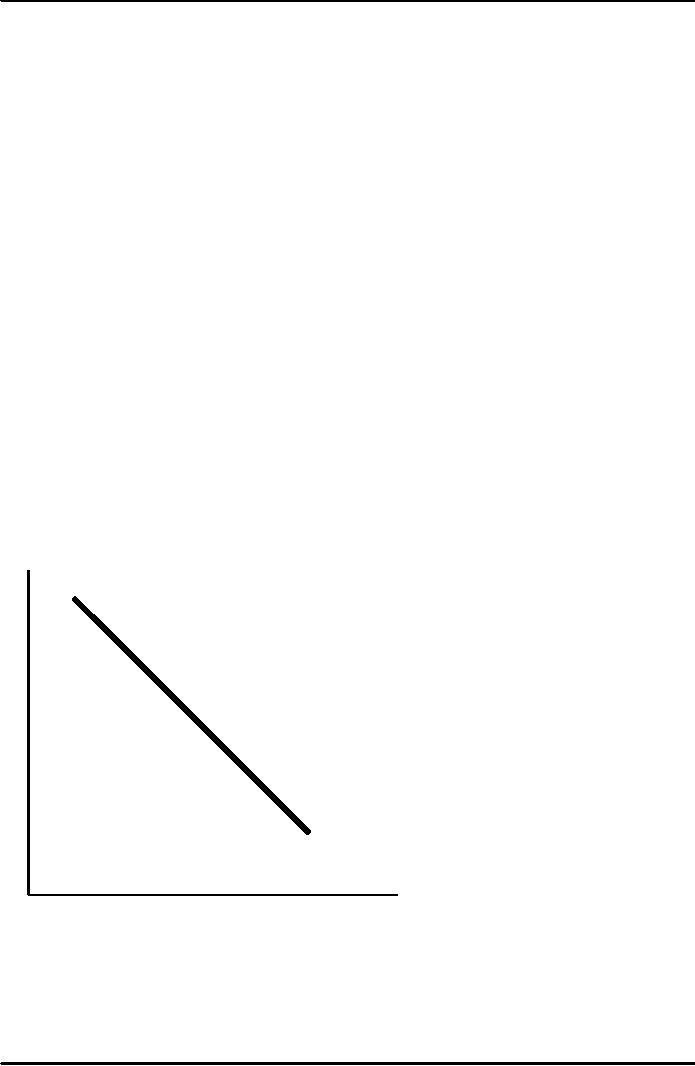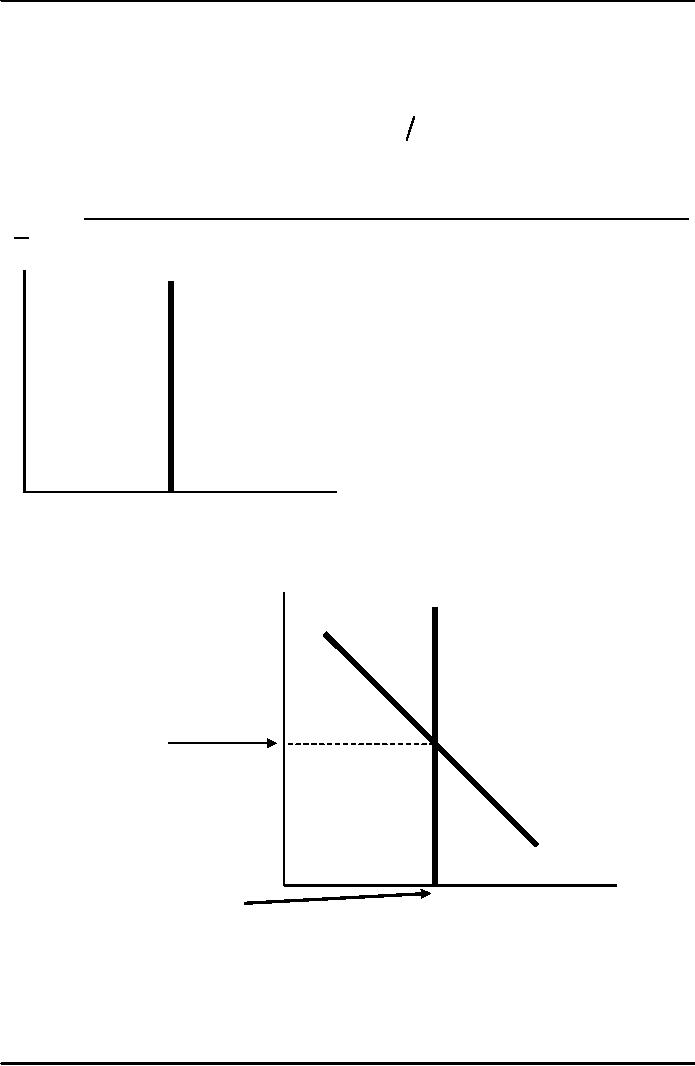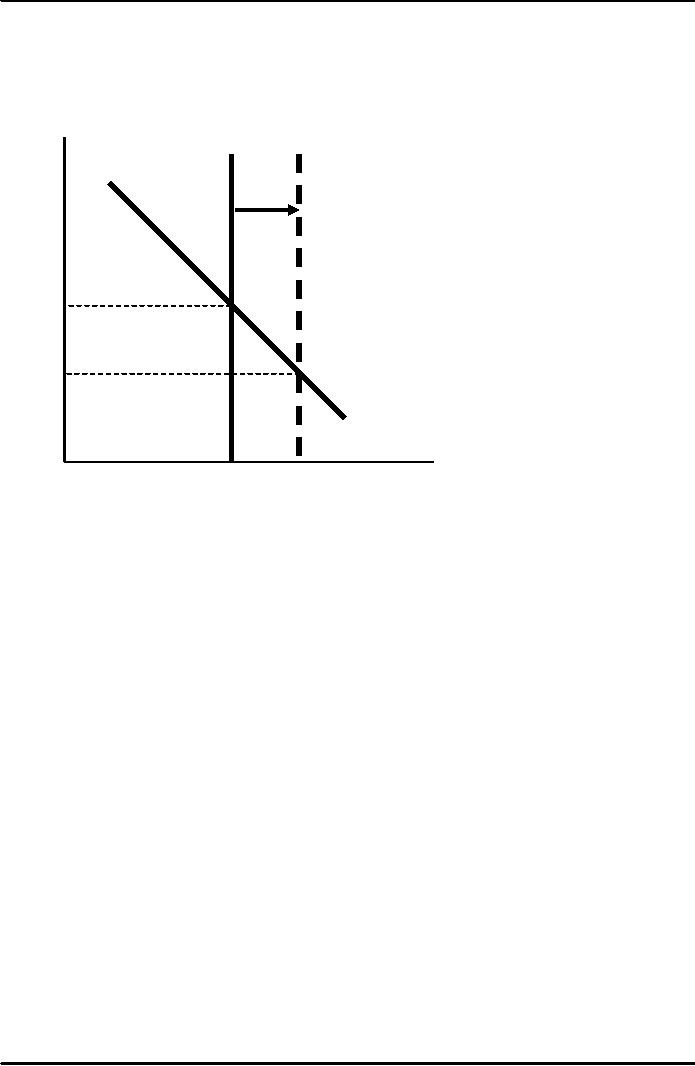 |
AGGREGATE DEMAND IN THE OPEN ECONOMY:Lessons about fiscal policy |
| << AGGREGATE DEMAND AND AGGREGATE SUPPLY (Continued…) |
| AGGREGATE DEMAND IN THE OPEN ECONOMY(Continued…):Fixed exchange rates >> |

Macroeconomics
ECO 403
VU
LESSON
30
AGGREGATE
DEMAND IN THE OPEN
ECONOMY
The
Mundell-Fleming Model
The
Mundell-Fleming model portrays
the relationship between the
nominal exchange rate and
the
economy output.
It
is an extension of IS-LM
model.
·
Key
assumption:
Small
open economy with perfect
capital mobility.
r
= r* (given)
·
Goods
market equilibrium-the IS*
curve:
Y
= C
(Y
- T
) +
I
(r
*) +
G
+ NX
(e
)
Where:
e
=
nominal exchange rate
=
foreign currency per unit of
domestic currency (e.g. 110
yen per dollar)
The
IS*
curve:
Goods Market
Equilibrium
The
IS* curve is drawn for a
given value of r*.
Intuition
for the slope:
↓
e
⇒ ↑ NX
⇒ ↑ Y
e
IS*
Y
141

Macroeconomics
ECO 403
VU
The
LM*
curve:
Money Market
Equilibrium
M
P = L
(r
*,Y
)
The
LM*
curve
·
Is drawn for a
given value of r*
·
Is vertical
because:
given
r*, there is only one
value of Y that equates
money demand with supply,
regardless of
e.
e
LM*
Y
Equilibrium
in the Mundell-Fleming
Model
e
LM*
equilibrium
exchange
rate
IS*
equilibrium
Y
level
of
income
Floating
& fixed exchange
rates
·
In
a system of floating exchange
rates,
e
is allowed to fluctuate in response to
changing economic
conditions.
142

Macroeconomics
ECO 403
VU
·
In
contrast, under fixed
exchange rates,
the
central bank trades domestic
for foreign
currency
at a predetermined price.
·
We
now consider fiscal,
monetary, and trade policy:
first in a floating exchange
rate system,
then
in a fixed exchange rate
system.
Fiscal
policy under floating
exchange rates
Y
= C
(Y
- T
) +
I
(r
*) +
G
+ NX
(e
)
M
P = L
(r
*,Y
)
At
any given value of e, a
fiscal expansion increases
Y,
shifting
IS*
to the right.
e
LM*1
e2
e1
IS*2
IS*1
Y
Y1
Results:
Δe >
0, ΔY =
0
Lessons
about fiscal
policy
·
In
a small open economy with
perfect capital mobility,
fiscal policy is utterly
incapable of
affecting
real GDP.
·
"Crowding
out"
·
Closed
economy:
Fiscal
policy crowds out investment
by causing the interest rate
to rise.
·
Small
open economy:
Fiscal
policy crowds out net
exports by causing the
exchange rate to
appreciate.
143

Macroeconomics
ECO 403
VU
Monetary
Policy under floating
exchange rates
An
increase in M shifts LM*
right because Y must rise to
restore equilibrium in the
money
market.
e
LM*2
LM*1
e1
e2
IS*1
Y
Y1
Y2
Results:
Δe
<
0, ΔY
>
0
Lessons
about monetary
policy
·
Monetary
policy affects output by
affecting one (or more) of
the components of
aggregate
demand:
↑M ⇒
↓r
⇒
↑I
⇒
↑Y
Closed
economy:
Small
open economy: ↑M ⇒
↓e
⇒
↑NX
⇒
↑Y
Expansionary
monetary policy does not
raise world aggregate
demand, it shifts demand
from
foreign
to domestic products.
Thus,
the increases in income and
employment at home come at
the expense of losses
abroad.
144
Table of Contents:
- INTRODUCTION:COURSE DESCRIPTION, TEN PRINCIPLES OF ECONOMICS
- PRINCIPLE OF MACROECONOMICS:People Face Tradeoffs
- IMPORTANCE OF MACROECONOMICS:Interest rates and rental payments
- THE DATA OF MACROECONOMICS:Rules for computing GDP
- THE DATA OF MACROECONOMICS (Continued…):Components of Expenditures
- THE DATA OF MACROECONOMICS (Continued…):How to construct the CPI
- NATIONAL INCOME: WHERE IT COMES FROM AND WHERE IT GOES
- NATIONAL INCOME: WHERE IT COMES FROM AND WHERE IT GOES (Continued…)
- NATIONAL INCOME: WHERE IT COMES FROM AND WHERE IT GOES (Continued…)
- NATIONAL INCOME: WHERE IT COMES FROM AND WHERE IT GOES (Continued…)
- MONEY AND INFLATION:The Quantity Equation, Inflation and interest rates
- MONEY AND INFLATION (Continued…):Money demand and the nominal interest rate
- MONEY AND INFLATION (Continued…):Costs of expected inflation:
- MONEY AND INFLATION (Continued…):The Classical Dichotomy
- OPEN ECONOMY:Three experiments, The nominal exchange rate
- OPEN ECONOMY (Continued…):The Determinants of the Nominal Exchange Rate
- OPEN ECONOMY (Continued…):A first model of the natural rate
- ISSUES IN UNEMPLOYMENT:Public Policy and Job Search
- ECONOMIC GROWTH:THE SOLOW MODEL, Saving and investment
- ECONOMIC GROWTH (Continued…):The Steady State
- ECONOMIC GROWTH (Continued…):The Golden Rule Capital Stock
- ECONOMIC GROWTH (Continued…):The Golden Rule, Policies to promote growth
- ECONOMIC GROWTH (Continued…):Possible problems with industrial policy
- AGGREGATE DEMAND AND AGGREGATE SUPPLY:When prices are sticky
- AGGREGATE DEMAND AND AGGREGATE SUPPLY (Continued…):
- AGGREGATE DEMAND AND AGGREGATE SUPPLY (Continued…):
- AGGREGATE DEMAND AND AGGREGATE SUPPLY (Continued…)
- AGGREGATE DEMAND AND AGGREGATE SUPPLY (Continued…)
- AGGREGATE DEMAND AND AGGREGATE SUPPLY (Continued…)
- AGGREGATE DEMAND IN THE OPEN ECONOMY:Lessons about fiscal policy
- AGGREGATE DEMAND IN THE OPEN ECONOMY(Continued…):Fixed exchange rates
- AGGREGATE DEMAND IN THE OPEN ECONOMY (Continued…):Why income might not rise
- AGGREGATE SUPPLY:The sticky-price model
- AGGREGATE SUPPLY (Continued…):Deriving the Phillips Curve from SRAS
- GOVERNMENT DEBT:Permanent Debt, Floating Debt, Unfunded Debts
- GOVERNMENT DEBT (Continued…):Starting with too little capital,
- CONSUMPTION:Secular Stagnation and Simon Kuznets
- CONSUMPTION (Continued…):Consumer Preferences, Constraints on Borrowings
- CONSUMPTION (Continued…):The Life-cycle Consumption Function
- INVESTMENT:The Rental Price of Capital, The Cost of Capital
- INVESTMENT (Continued…):The Determinants of Investment
- INVESTMENT (Continued…):Financing Constraints, Residential Investment
- INVESTMENT (Continued…):Inventories and the Real Interest Rate
- MONEY:Money Supply, Fractional Reserve Banking,
- MONEY (Continued…):Three Instruments of Money Supply, Money Demand